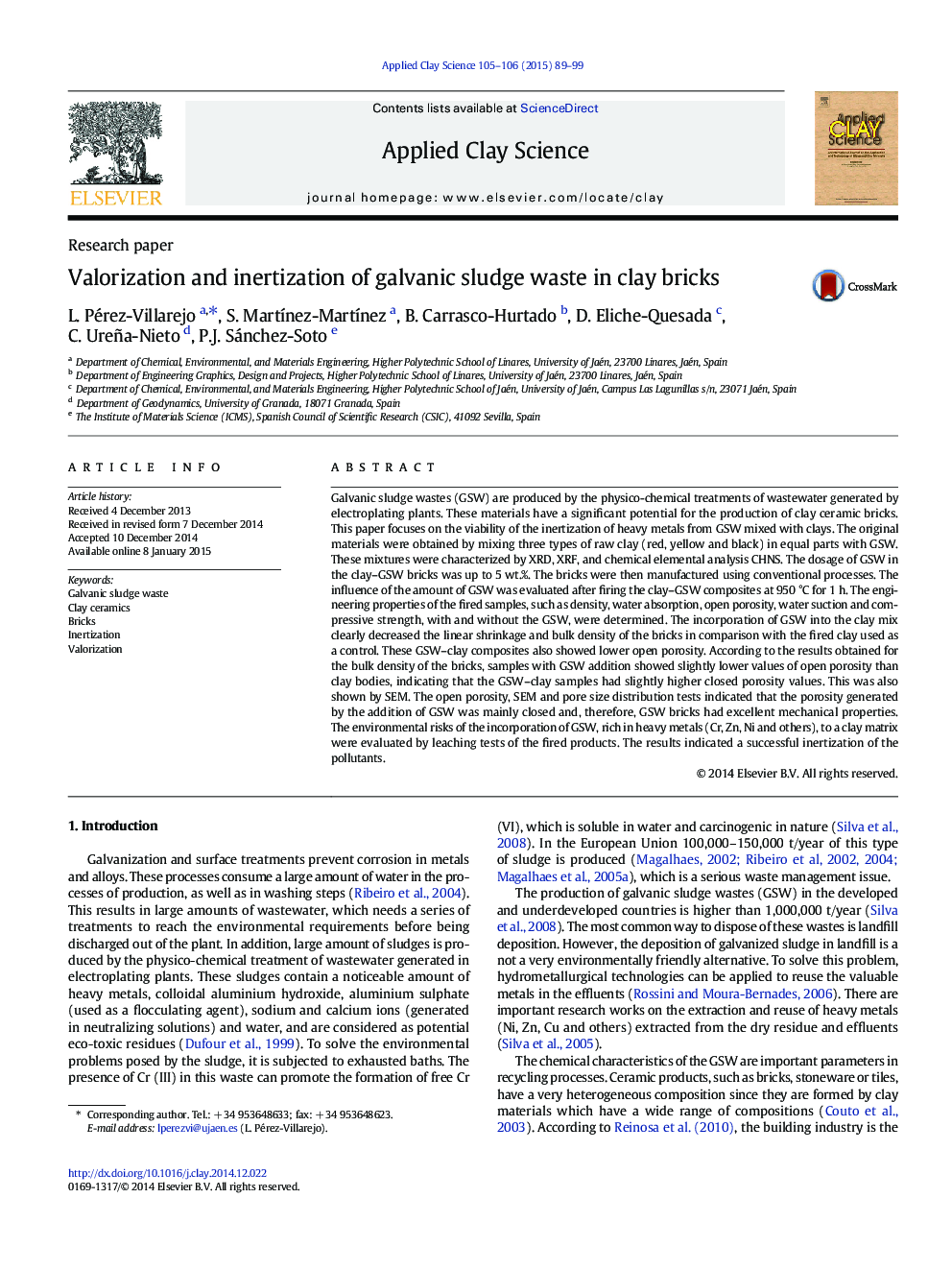| کد مقاله | کد نشریه | سال انتشار | مقاله انگلیسی | نسخه تمام متن |
|---|---|---|---|---|
| 1694564 | 1519073 | 2015 | 11 صفحه PDF | دانلود رایگان |
• GSW from electroplating industry can be used in the manufacture of clay bricks.
• Addition of GSW (1–5 wt.%) to the clay changed some properties of final fired bricks.
• Composites with GSW were mechanically more resistant as compared with the fired clay.
• The results establish a way to valorize GSW avoiding the impact of landfills.
Galvanic sludge wastes (GSW) are produced by the physico-chemical treatments of wastewater generated by electroplating plants. These materials have a significant potential for the production of clay ceramic bricks. This paper focuses on the viability of the inertization of heavy metals from GSW mixed with clays. The original materials were obtained by mixing three types of raw clay (red, yellow and black) in equal parts with GSW. These mixtures were characterized by XRD, XRF, and chemical elemental analysis CHNS. The dosage of GSW in the clay–GSW bricks was up to 5 wt.%. The bricks were then manufactured using conventional processes. The influence of the amount of GSW was evaluated after firing the clay–GSW composites at 950 °C for 1 h. The engineering properties of the fired samples, such as density, water absorption, open porosity, water suction and compressive strength, with and without the GSW, were determined. The incorporation of GSW into the clay mix clearly decreased the linear shrinkage and bulk density of the bricks in comparison with the fired clay used as a control. These GSW–clay composites also showed lower open porosity. According to the results obtained for the bulk density of the bricks, samples with GSW addition showed slightly lower values of open porosity than clay bodies, indicating that the GSW–clay samples had slightly higher closed porosity values. This was also shown by SEM. The open porosity, SEM and pore size distribution tests indicated that the porosity generated by the addition of GSW was mainly closed and, therefore, GSW bricks had excellent mechanical properties. The environmental risks of the incorporation of GSW, rich in heavy metals (Cr, Zn, Ni and others), to a clay matrix were evaluated by leaching tests of the fired products. The results indicated a successful inertization of the pollutants.
Journal: Applied Clay Science - Volumes 105–106, March 2015, Pages 89–99
